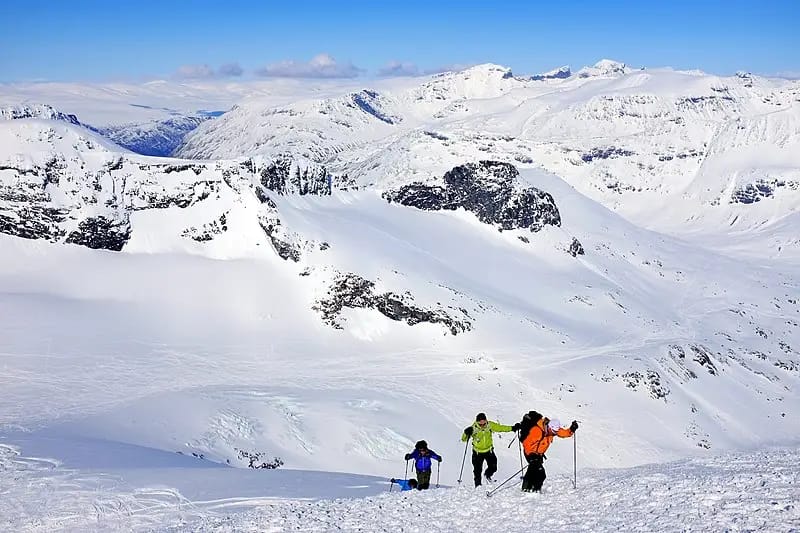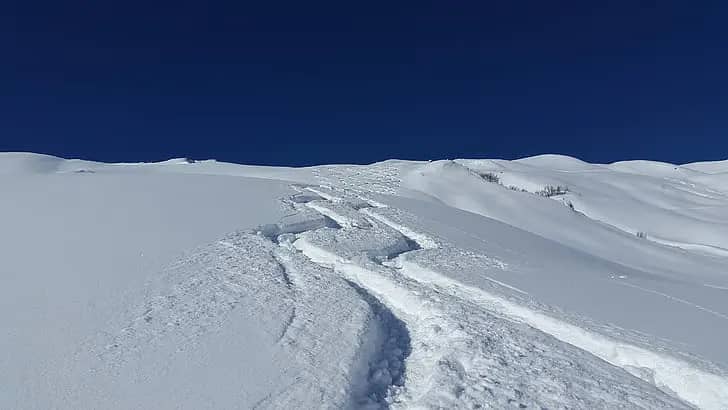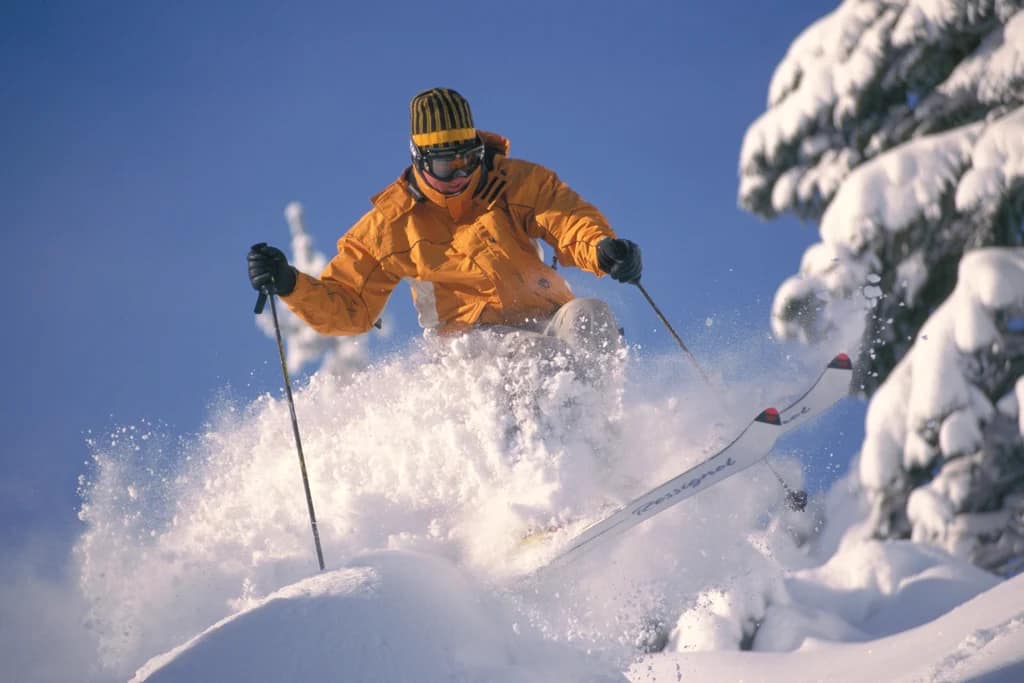Introduction to Off Piste Skiing
Have you ever gazed beyond the groomed trails of a ski resort and felt the allure of the untouched snow? That’s the siren call of off piste skiing, a thrilling escape into the wild, unmarked terrains of the mountain. Off piste skiing, also known as backcountry skiing, has surged in popularity amongst those seeking a pure, adrenaline-fueled connection with nature. But what is off piste skiing, exactly? It’s the art of navigating through ungroomed and unpatrolled areas, requiring a blend of skill, caution, and respect for the mountain’s raw power.
Table of Contents
The History of Off Piste Skiing
Have you ever wondered how the thrilling adventure of off piste skiing began? What is off piste skiing, but a journey back to the very roots of skiing itself? The history of off piste skiing is as fascinating as it is inspiring, taking us from the snow-capped peaks of the past to the cutting-edge slopes of today.
Off piste skiing, also known as backcountry skiing, has its origins deeply embedded in the necessity of winter travel and hunting in snowy regions. It wasn’t long before the practicality of skiing transcended into recreation. By the turn of the 20th century, as ski technology evolved, so did the desire to venture beyond groomed trails and into the untouched wilderness.
One cannot discuss the history of off piste skiing without tipping a hat to the pioneers of the sport. Legends like Hannes Schneider from Austria, who developed the Arlberg technique in the early 1900s, revolutionized how skiers approached deep snow and steep terrain. This technique laid the groundwork for modern off piste skiing, emphasizing control and fluidity.
The mid-1900s saw a surge in off piste skiing popularity, as adventurers sought the thrill of carving through untracked powder. Ski films and magazines began to feature the exploits of daring skiers, further cementing off piste skiing’s place in the pantheon of extreme sports. The introduction of avalanche safety equipment, such as beacons and probes, in the latter half of the century, allowed for safer exploration of backcountry terrains, thus expanding the sport’s reach.

Today, off piste skiing continues to evolve with advancements in gear and technique. Skiers are now able to access remote areas with greater ease, thanks to improvements in ski design and the advent of helicopter and cat skiing. The sport’s rich history is a testament to the human spirit’s quest for adventure and the joy found in nature’s untouched splendors.
Understanding the Basics of Off Piste Skiing
Embarking on an off piste skiing adventure is akin to stepping into a world where the snow tells its own story, untouched and pure. But what is off piste skiing, exactly? At its core, it’s skiing outside the marked and patrolled boundaries of ski resorts, where the terrain is un-groomed and the thrills are as abundant as the risks. It’s here that skiers find the ultimate test of their skills, carving their own paths through fresh powder.
Equipment Needed for Off Piste Skiing
Before you venture into the wilderness, you’ll need to gear up. The right equipment is your lifeline in the backcountry. You’ll require wider skis for better flotation in deep snow, a sturdy pair of poles, and boots that balance flexibility with support. Safety gear is non-negotiable: a beacon, probe, and shovel for avalanche rescue scenarios, and don’t forget a first-aid kit. Remember, preparation is the precursor to success in off piste skiing.
Let’s break it down with some numbers:
| Equipment | Percentage of Skiers Using It |
|---|---|
| Avalanche Beacon | 95% |
| Probe | 90% |
| Shovel | 88% |
| First-Aid Kit | 80% |
As you can see, the majority of skiers are not skimping on safety. And neither should you.

The Benefits and Risks of Off Piste Skiing
Embarking on an off piste skiing adventure can be a thrilling and transformative experience, but it’s not without its risks. Let’s dive into the pros and cons to help you make an informed decision about whether this exhilarating journey is right for you.
The Benefits of Off Piste Skiing
First, the benefits. Off piste skiing offers a sense of freedom and exploration that is unmatched on groomed trails. The ability to carve your own path through untouched snow and diverse terrain is exhilarating. It’s not just about the physical activity; it’s about connecting with nature in its purest form. This form of skiing can also improve your technique, as the varied conditions require a higher level of skill and adaptability. What’s more, off piste skiing can lead to fewer crowds and a serene environment, allowing for a more personal and introspective experience.
The Risks of Off Piste Skiing
However, with great rewards come great risks. The main keyword ‘what is off piste skiing’ often brings to mind images of pristine snow, but it’s crucial to remember the potential dangers. Avalanches pose the most significant threat, with unpredictable snow conditions that can change rapidly. Skiers must be vigilant and prepared for emergencies. Additionally, there are risks of falls and collisions due to hidden obstacles like rocks or tree wells. It’s essential to have the proper equipment, such as an avalanche transceiver, shovel, and probe, and the knowledge to use them effectively.
Striking a Balance
To strike the right balance between enjoying the benefits and mitigating the risks, skiers should always check the avalanche forecast, never ski alone, and consider hiring a guide who knows the area. Preparation and education are your best defenses against the inherent dangers of off piste skiing. By respecting the mountain and understanding the risks, skiers can safely enjoy the boundless beauty that off piste skiing has to offer.

Tips and Tricks for Off Piste Skiing
Embarking on an off piste skiing adventure can be as exhilarating as it is challenging. To help you carve your path through untouched snow with confidence, let’s dive into some insider tips and tricks that will elevate your experience. Whether you’re a beginner or an intermediate skier, these nuggets of wisdom can make a world of difference in your off-piste endeavors.
Training and Preparation for Off Piste Skiing
Before you tackle the backcountry, it’s crucial to ensure that your body and mind are primed for the demands of off piste skiing. Physical fitness is paramount, as navigating through variable snow conditions requires strength, endurance, and agility. Incorporate exercises that focus on leg strength, core stability, and cardiovascular fitness into your routine. Think squats, lunges, planks, and interval training.
But it’s not just about brawn; mental preparedness is equally important. Visualize different skiing scenarios and how you would handle them. This mental rehearsal can enhance your on-snow decision-making skills.
Here’s a snapshot of an effective off piste training program:
| Exercise | Sets | Reps |
|---|---|---|
| Squats | 3 | 12 |
| Lunges | 2 | 10 each leg |
| Planks | 3 | 60 seconds |
| Interval Training | Varies | 20-30 minutes |

FAQ Section
What is off piste skiing?
Off piste skiing refers to skiing outside the marked or patrolled boundaries of a ski resort, on ungroomed and unpatrolled terrain. It’s all about embracing the natural, untouched snow and often includes navigating through variable conditions like deep powder, trees, and steep slopes. It’s a thrilling experience, but it’s essential to be aware of the risks and prepare accordingly.
How does off piste skiing differ from regular skiing?
Regular skiing typically takes place on groomed slopes within the boundaries of a ski resort. These areas are maintained for safety and ease of navigation. Off piste skiing, on the other hand, is a more adventurous form of skiing on natural terrain without the grooming or safety measures. It requires different techniques, such as learning to manage your balance in deep snow and being prepared for variable snow conditions.
Is off piste skiing safe?
While off piste skiing offers an exhilarating experience, it does come with increased risks compared to on-piste skiing. Avalanches, hidden obstacles, and sudden changes in weather are just a few potential dangers. However, with the right preparation, such as taking an avalanche safety course, carrying the appropriate safety gear (like a beacon, shovel, and probe), and skiing with a knowledgeable guide or partner, you can significantly mitigate these risks.
What equipment do I need for off piste skiing?
In addition to your standard skiing gear, off piste skiing requires a few extra pieces of equipment for safety and performance. A wider ski can help you float better in deep snow, while an avalanche transceiver, shovel, and probe are essential for safety in case of an avalanche. Also, consider a backpack equipped with a hydration system and space for extra layers, snacks, and a first aid kit.
Can beginners try off piste skiing?
Beginners can certainly aspire to off piste skiing, but it’s important to build a solid foundation on groomed slopes first. Once you’re comfortable with basic skiing techniques and have developed good control and balance, consider taking a specialized off piste lesson or clinic. Always start with easier, low-risk off piste terrain and go with an experienced guide or instructor who can introduce you to the necessary skills progressively.

Ultimate Guide to XC Ski Bindings for Performance
Did you know that the right cross-country ski bindings can significantly enhance your performance on the trails? Choosing the[…]

Best Wide Calf Ski Socks for Comfort & Fit
Did you know that ill-fitting ski socks can ruin your skiing experience? It’s true! Finding the perfect pair[…]

Ultimate Guide to Women’s Twin Tip Skis 2024
Conquer the slopes with confidence! Discover the best women’s twin tip skis of 2024, tailored for versatility, style, and
Conclusion
As we carve our way to the end of this thrilling journey into off piste skiing, it’s clear that this adventurous form of skiing is more than just a sport—it’s a passion that connects us with the raw beauty of nature. Whether you’re drawn to the untouched snow or the exhilarating challenge, off piste skiing offers an experience that traditional slopes simply cannot match.
Throughout this article, we’ve navigated the history, the basics, and the nuances that make off piste skiing a unique and rewarding adventure. We’ve equipped you with knowledge on the essential gear, highlighted the undeniable benefits, and addressed the inherent risks. With our tips and tricks, even novices can look forward to their first off piste experience with confidence and excitement.
Remember, off piste skiing is not just about the adrenaline rush—it’s a symphony of skill, preparation, and respect for the mountain. It demands physical fitness, mental sharpness, and a deep understanding of the alpine environment. But for those who heed the call, the rewards are immeasurable: the serenity of a mountain scape, the sense of accomplishment, and the stories that will echo in your memory.
In essence, what is off piste skiing? It’s a transformative adventure that challenges your limits and expands your horizons. So, as you stand on the brink of untracked snow, ready to leave your mark, know that you’re part of a timeless tradition—an ode to freedom and the great outdoors.
Further Reading and Resources
For those looking to expand their knowledge and skills in off piste skiing, here are a couple of resources:
- The Safe Zone – Powder Magazine: An insightful article on safety measures and preparation for off piste skiing.
- The American Avalanche Association: A comprehensive resource for avalanche education, safety courses, and current avalanche forecasts.


No responses yet